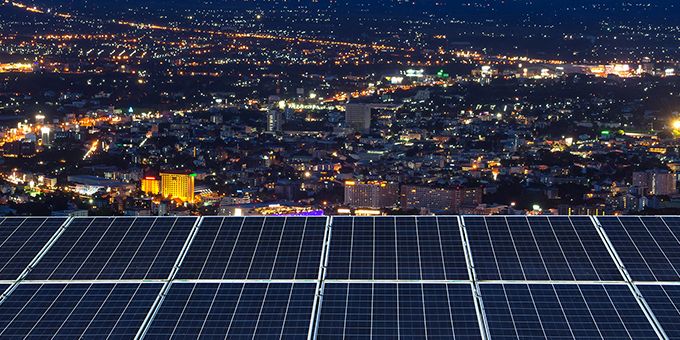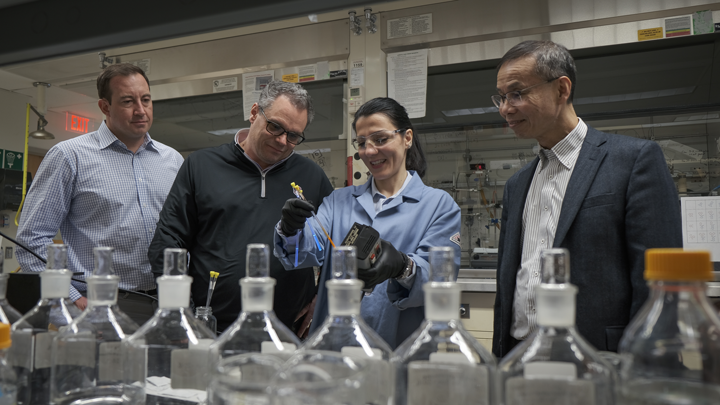Here, Dr Franky So, chief technology officer of nanotechnology research company Nextgen Nano, explains the historical developments of photovoltaic technology and looks to the innovations shaping the years ahead.
 The Evolution of Solar Technology - How Photovoltaic Technology Has Developed and Why Nanotechnology May Influence the Future
The Evolution of Solar Technology - How Photovoltaic Technology Has Developed and Why Nanotechnology May Influence the Future

Dr Franky So, CTO | NextGen Nano
In days gone by, many ancient civilisations from the Aztecs to ancient Egyptians worshipped the Sun as a god or deity that could bestow prosperity and maintain the order of the day-night cycle. In the slightly more enlightened times of today, we look to the Sun once more; not as a deity, but as a sustainable source of energy, if only we can harness it effectively. Here, Dr Franky So, chief technology officer of nanotechnology research company Nextgen Nano, explains the historical developments of photovoltaic technology and looks to the innovations shaping the years ahead.
As the closest star to Earth, we owe a lot to the Sun. Not only does it keep us and our cosmic neighbours in a generally consistent orbit that fosters the conditions for life as we know it, but it also provides us with an immense source of energy. Every hour of the day, the Sun hits the Earth with 430 quintillion joules of energy. This is a tremendous amount of energy. For context, if we were able to harness all this energy as electricity, it would be enough to satisfy the world’s global energy demands.
Realising this, the opportunity presented for solar technology is equally tremendous. Since the photovoltaic (PV) effect was first observed by Edmond Becquerel in 1839, we’ve become aware of the ways humankind can harness the energy expelled by the sun on a daily basis. PV panels have been our primary means of doing that since their invention in 1954, with varying degrees of success and efficiency.
However, recent years have driven greater research into highly efficient and commercially viable PV technology. Humanity has collectively accelerated the depletion of natural resources for use as energy sources, and the changes to the environment linked to the use of these resources, has increased the need for sustainable energy generation.
The birth of solar technology
There are three specific processes that need to take place in PV cells for them to function properly. First, the cells need to absorb photons in semiconducting materials. Then, these photons excite charge carriers in the semiconductor material, which subsequently are extracted from the cell to electrodes, resulting in electrical current generation. To convert this current to electricity, the generated direct current (DC) goes through to inverters is converted alternating current (AC) for consumption.
The first PV cell that achieved solar energy harvesting was produced by Bell Labs in 1954. This panel converted sunlight to electricity with a six per cent efficiency, meaning it only successfully turned a small fraction of the photons that hit it into electricity. Nevertheless, it marked the birth of the first-generation solar technology.

First generation PV panels consisted of wafer-based cells, which were typically made using materials such as crystalline silicon. The overall design of these panels was based around that of a single p-n junction, where positive (p) and negative (n) type semiconductor materials form a “junction”. In an “n-doped” material, negative charges are present, and positive charges are present in the “p-doped” layer. This generates an electric field at the junction between the layers, which pushes photo-generated charge carriers out of the p-n junction and towards the electrodes.
The second generation
Developments continued into the 21st century, with a solar cell being created that exhibited 33 per cent efficiency in laboratory environments in 1999. The second generation solar technology was born in the 1980s, promising to overcome some of the technical and physical limitations introduced by their predecessors 30 years ago.
Where the first generation was primarily silicon based, this new generation cells uses a more diverse range of materials, ranging from amorphous silicon cells to cadmium telluride. Because of the strong light absorption comparing with silicon, these are ‘thin-film solar cells because thin layers of these materials can be deposited onto substrate materials such as glass or plastic.
The key difference between the two generations is that the slimmer footprint of the latter’s cells allowed for new PV panel designs that could circumvent the theoretical Shockley-Queisser limit. This is predominately achieved by introducing multiple photoactive materials to create multi-junction cells and extend the spectral response of the final cell and increase the power conversion efficiency.
Of course, second generation solar has its own practical limitations. The substrate materials in second generation PV panels are still inflexible and, with current efficiencies being in the region of 20 to 30 per cent depending on footprint and materials, require substantial surface areas. In addition, some of the materials used — such as cadmium, which is noted as carcinogenic to humans — can produce toxic by-products during recycling or when exposed to certain environmental conditions.
This poses a challenge for the design of PV panels. In addition to being a sustainable energy source, it would be ideal if solar panels were environmentally-friendly and non-toxic to humans and the environment alike. This has spurred research into third generation solar — and research looks promising.
Next generation solar
The third generation of solar technology incorporates several types of solar technologies, most notably organic photovoltaic (OPV) cells that aim to provide greater efficiency while reducing the overall environmental impact of PV panels. This is the technology that the team of researchers at Nextgen Nano has been exploring, with the goal of using nanotechnology to develop a highly efficient, flexible organic solar cells that supports efforts to decentralise energy generation.
The result of this research is PolyPower, which blends earth-friendly organic materials to provide a lightweight, flexible and potentially inexpensive approach to solar energy harvesting. This technology achieves these characteristics while still being robust, mitigating the problems associated with brittle panels.
In fact, because PolyPower is developed at a nano level with transparency and flexibility, it can effectively be applied as semi-transparent thin layer to the surface of buildings, windows and even the roof-top of a vehicle. These applications could feature organic polymer solar cells as a design feature, allowing them to charge during outdoor usage, independent of a centralised power supply.
This is where we see the future of solar technology going. Historically, PV panels have been largely limited due to their mechanical properties. The next generation of solar can overcome these challenges and open a world of possibilities, with the use of nanotechnology. The opportunities presented mean we can effectively use solar energy in applications where they have not previously been viable.
We no longer worship the Sun as a sacred deity, but there is no understating the importance of it in the future of energy generation. It is, in essence, a cosmic battery boasting practically bottomless energy and with half of its (approximately) ten billion year run time remaining. All we need is the right technology to harness this potential energy, in a way that is ethical, environmentally friendly and adaptable to the applications and industries that will emerge in the years ahead.

NextGen Nano’s breakthrough technology replaces existing solutions which are fabricated with pollutant materials with earth-friendly organic materials. This breakthrough enables NextGen Nano to develop solar cells that produce energy with unrivalled efficiency, at far lower cost than existing hardware. The technology can be applied to flexible surfaces, thus making the limitless solar power source more usable and cost effective than ever before.
The content & opinions in this article are the author’s and do not necessarily represent the views of AltEnergyMag
Comments (0)
This post does not have any comments. Be the first to leave a comment below.
Featured Product

